1990s
Pelvic Muscle Videogame Controller
I see no reason why this device should be limited to a clinical setting. It should sell very well to extreme gamers who want an additional controller to supplement their two hands.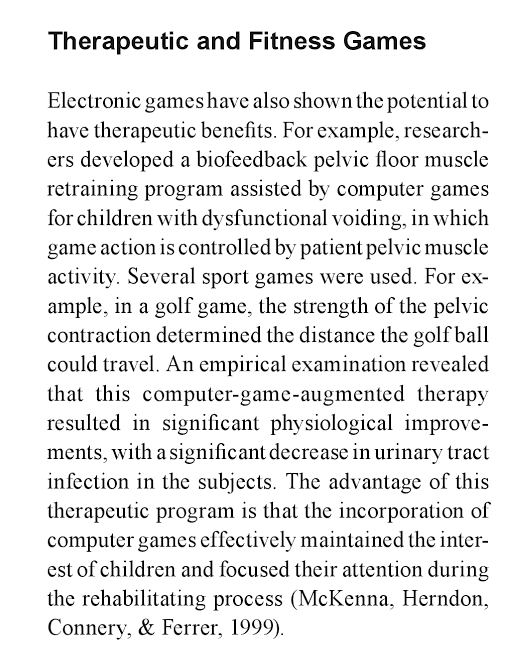
Source.
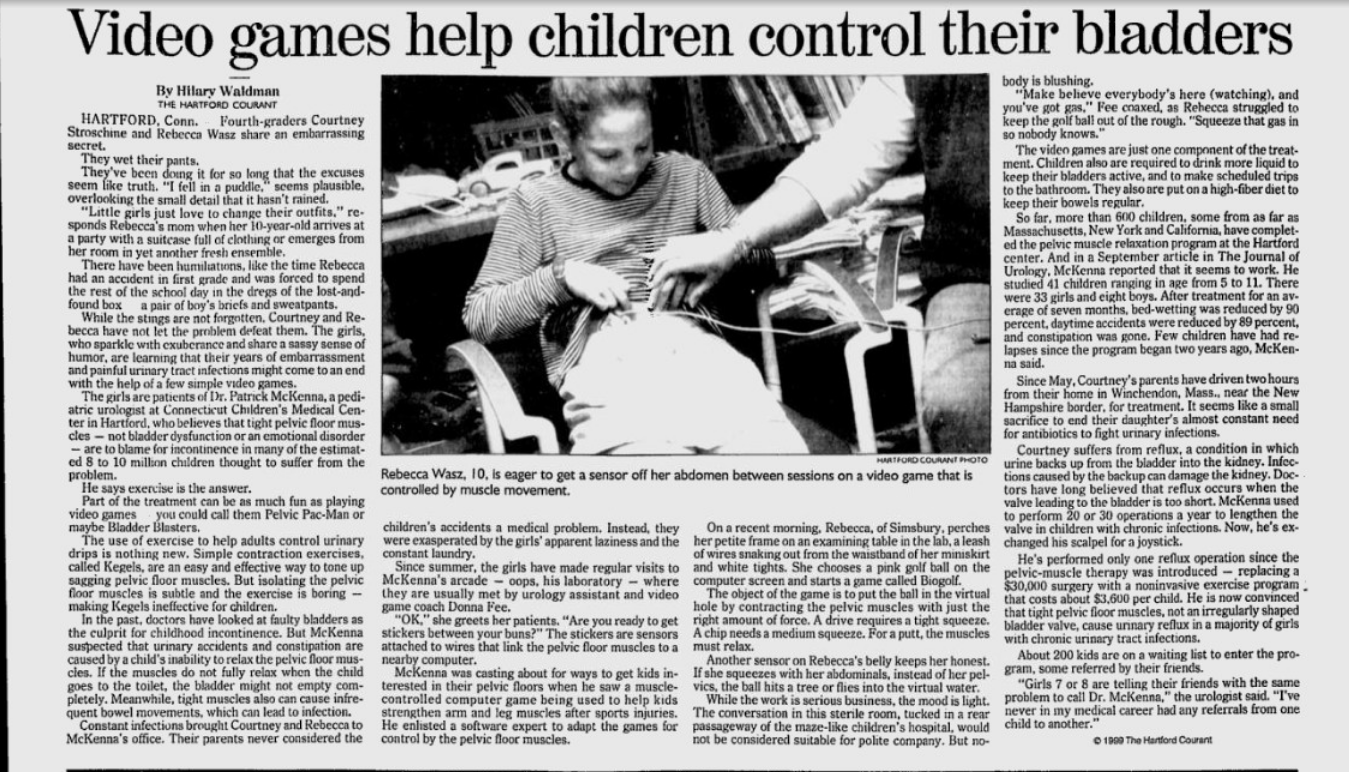
Source.
Posted By: Paul - Mon Aug 28, 2017 -
Comments (1)
Category: Body, 1990s, Videogames and Gamers
Wizard Amendment
March 1995: During the discussion of a bill in the New Mexico state senate, Sen. Duncan Scott (R) proposed the following amendment:Additionally, a psychologist or psychiatrist shall be required to don a white beard that is not less than 18 inches in length, and shall punctuate crucial elements of his testimony by stabbing the air with a wand. Whenever a psychologist or psychiatrist provides expert testimony regarding the defendant's competency, the bailiff shall contemporaneously dim the courtroom lights and administer two strikes to a Chinese gong.
It passed in the Senate, but didn't make it through the House.

The Marion Star - Dec 28, 1995
Posted By: Alex - Sun Aug 27, 2017 -
Comments (4)
Category: Law, Politics, 1990s
Romanian Jail Craze
No matter how bad you think things might be, at least you're not in a Romanian jail pounding rusty nails into your head.For a related post, from way back in 2012, check out The Method of the Nail.

The Guardian - Aug 6, 1995
Posted By: Alex - Tue Aug 08, 2017 -
Comments (3)
Category: Prisons, 1990s
Doesn’t notice plane crash
If a plane crashes in your yard and you don't hear it, did it make a sound?
Arizona Republic - Apr 24, 1993
Posted By: Alex - Mon Aug 07, 2017 -
Comments (1)
Category: Accidents, Air Travel and Airlines, 1990s
The Maid of Cotton Pageant
Continuing our intermittent look at oddball beauty pageants.The Maid of Cotton pageant began in 1939. The annual pageant was sponsored by the National Cotton Council (NCC), Memphis Cotton Carnival, and the Cotton Exchanges of Memphis, New York, and New Orleans. The pageant was held in Memphis, Tennessee, in conjunction with the Carnival until the 1980s.
In mid-December every year the NCC released a list of contestants. Contestants were required to have been born in one of the cotton-producing states: Alabama, Arizona, Arkansas, California, Florida, Georgia, Kentucky, Louisiana, Mississippi, Missouri, New Mexico, North and South Carolina, Oklahoma, Tennessee, Texas or Virginia. They might have also been born in the cotton-producing counties of Alexander, Jefferson, Massac, Pulaski, Williamson or Madison, Illinois or in Clark or Nye counties of Nevada. There were usually twenty contestants each year.
Contestants were judged on personality, good manners, intelligence, and family background as well as beauty and an ability to model. A Top Ten were chosen and then a Top Five, and finally second and first runners up and a winner. Winners served as goodwill and fashion ambassadors of the cotton industry in a five-month, all-expense tour of American cities. In the mid-1950s the tour expanded globally. In the late 1950s a Little Miss Cotton pageant was begun but lasted only until 1963 before being discontinued. In the mid-1980s Dallas,Texas took over the pageant, in conjunction with the NCC and its overseas division, Cotton Council International. In 1986, to bolster interest and participation, the NCC eliminated the rule requiring contestants to be born in a cotton-producing state. The pageant was discontinued in 1993, one of the reasons being that Cotton Inc. stopped contributing scholarship money as well as waning public interest and changing marketing strategies.
More details here.
And also here.
The 1952 winner.

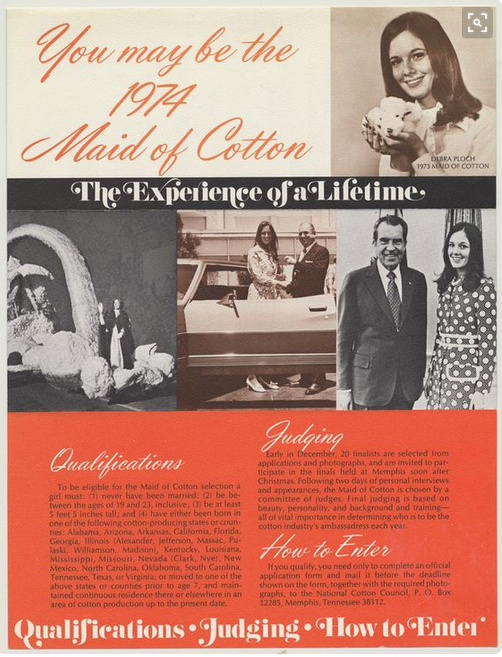
Posted By: Paul - Fri Jul 21, 2017 -
Comments (3)
Category: Beauty, Ugliness and Other Aesthetic Issues, Contests, Races and Other Competitions, 1930s, 1940s, 1950s, 1960s, 1970s, 1980s, 1990s
Hitler Heater Ad
1999: A Taiwanese company came under fire for its "Hitler Heater Ad." The ad for the German-made heater featured a cartoon image of Hitler standing alongside the heater. A company representative explained, "We decided to use Hitler because as soon as you see him, you think of Germany. It leaves a deep impression."The German manufacturer insisted it hadn't been told about the ad before it ran. More info: Taipei Times - Nov 23, 1999.

Posted By: Alex - Wed Jul 12, 2017 -
Comments (4)
Category: Advertising, 1990s
Edward Seese Memorial Scholarship
When millionaire real estate investor Edward Seese died in March 1995, he left instructions in his will to fund a $4.5 million scholarship at Broward Community College. The recipients of the scholarship, he instructed, were to be high school students who earned a C average. He felt that scholarships typically went to high academic achievers, so the C students had been "left out in the cold."The scholarship still seems to be available to those who qualify.
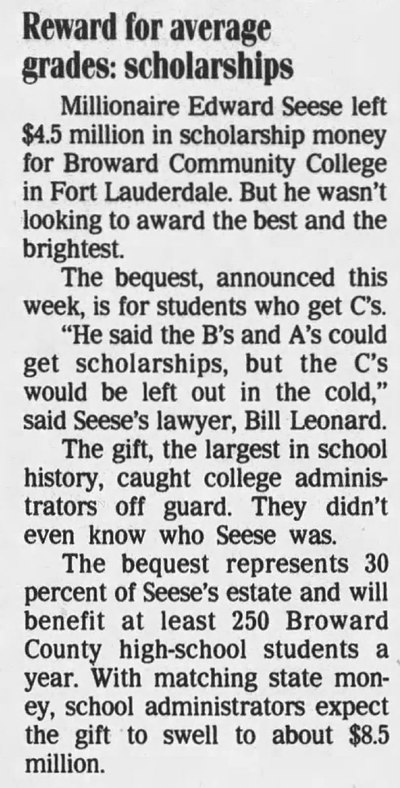
Tallahassee Democrat - June 21, 1995
Posted By: Alex - Wed Jun 28, 2017 -
Comments (2)
Category: Awards, Prizes, Competitions and Contests, Education, Universities, Colleges, Private Schools and Academia, 1990s
Conehead Sumo Wrestlers
1994: The Japan Sumo Association finally got around to banning the practice, apparently quite common among young sumo wrestlers, of implanting lumps of silicone beneath their scalp in order to meet the minimum height requirement of 5 feet 8 inches. The Association probably wouldn't have done anything if they hadn't become embarrassed by media reports of conehead wrestlers.Before the silicone technique became popular, some wrestlers used to hit themselves on top of their head to raise large bumps before being measured.

Morristown Daily Record - July 13, 1994
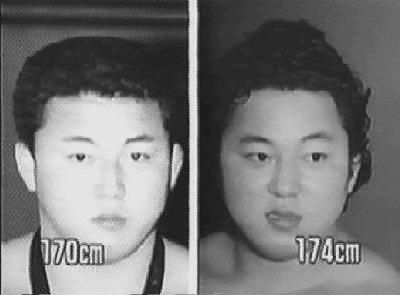
Sumo wrestler Mainoumi, before and after scalp implant
Posted By: Alex - Tue Jun 27, 2017 -
Comments (3)
Category: Sports, Wrestling, 1990s
The Art of Hayley Newman
Below are some of the captioned images that artist Hayley Newman displayed at her first solo show, "Connotations - Performance Images 1994-98".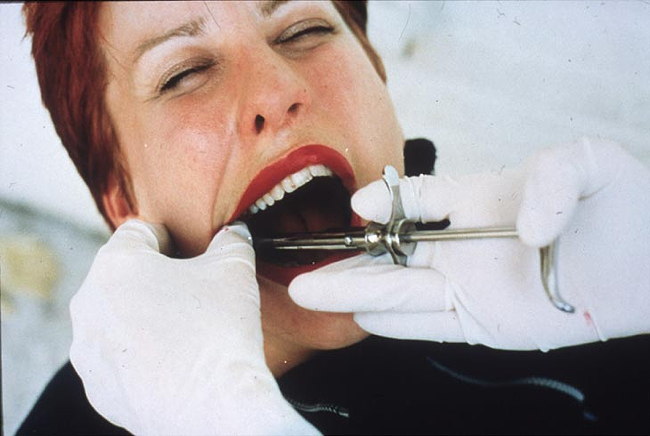
Lock-jaw Lecture Series (1997/1998)
"Over the period of a year I was invited to give a series of lectures on my work. Before each lecture I visited a local dentist and had my mouth anaesthetised. With my mouth made immobile, I gave my feeblest apologies to the students and staff before attempting to talk on my work."

B(in) (1996)
"Sitting in a bin bag waiting for bin men to pick me up in New York. When the bin men arrived at 4pm, I jumped out of the bag and ran home."
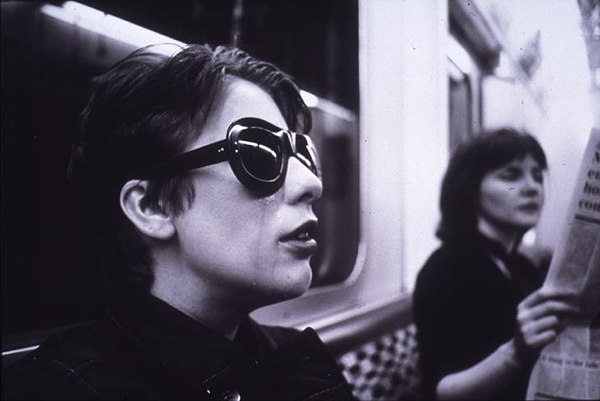
Crying Glasses (An Aid to Melancholia) - (1995)
"Over a year I wore the crying glasses while travelling on public transport in all the cities I visited. The glasses functioned using a pump system which, hidden inside my jacket allowed me to pump water up out of the glasses and produced a trickle of tears down my cheeks. The glasses were conceived as a tool to enable the representation of feelings in public spaces. Over the months of wearing the glasses they became an external mechanism which enabled the manifestation of internal and unidentifiable emotions."

Spirit (1995)
"Soho, London: Dressed as a ghost for Halloween I ran into various pubs in London's Soho, stole a drink and then left."
Here's the punchline, which Newman revealed if you read the fine print in the exhibit guide:
Image sources: Lock-jaw, Crying Glasses, B(in), Spirit
Posted By: Alex - Fri Jun 09, 2017 -
Comments (3)
Category: Art, Photography and Photographers, 1990s
Left by wife, becomes caveman
There's two ways to read this. Either this guy really took the break-up hard. Or, after his wife left him, he decided to live exactly as he wanted, and he was the happiest man in the world.I suspect there's a lot of married men who would revert to a caveman-like existence (perhaps to a less extreme degree) without the influence of their wives.
The Deseret News noted that he was known only as "Darab." But otherwise there's no more info to be found about this mysterious, wifeless hermit.

Philadelphia Daily News - Oct 24, 1996
Posted By: Alex - Tue May 02, 2017 -
Comments (2)
Category: Divorce, Marriage, 1990s

| Who We Are |
|---|
| Alex Boese Alex is the creator and curator of the Museum of Hoaxes. He's also the author of various weird, non-fiction, science-themed books such as Elephants on Acid and Psychedelic Apes. Paul Di Filippo Paul has been paid to put weird ideas into fictional form for over thirty years, in his career as a noted science fiction writer. He has recently begun blogging on many curious topics with three fellow writers at The Inferior 4+1. Contact Us |




